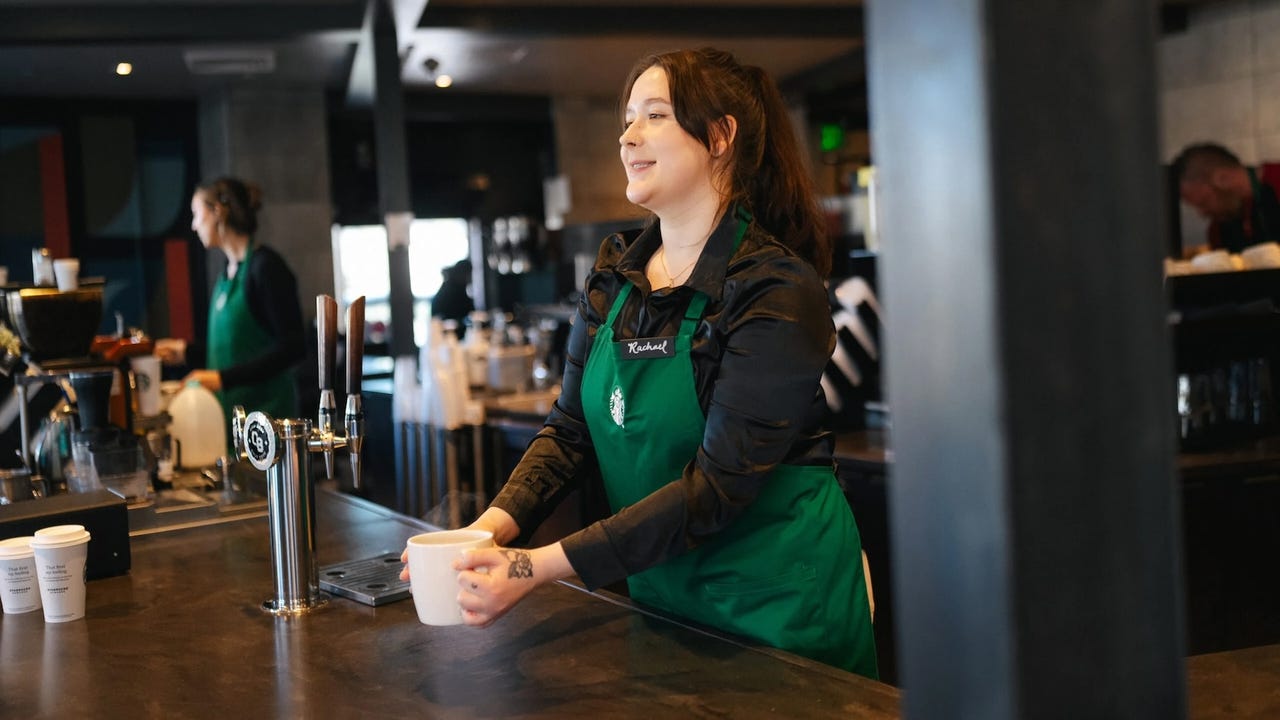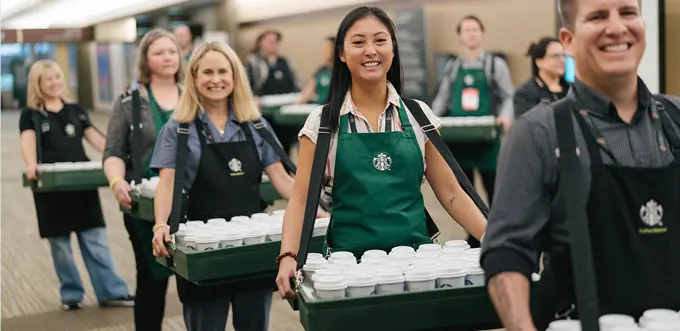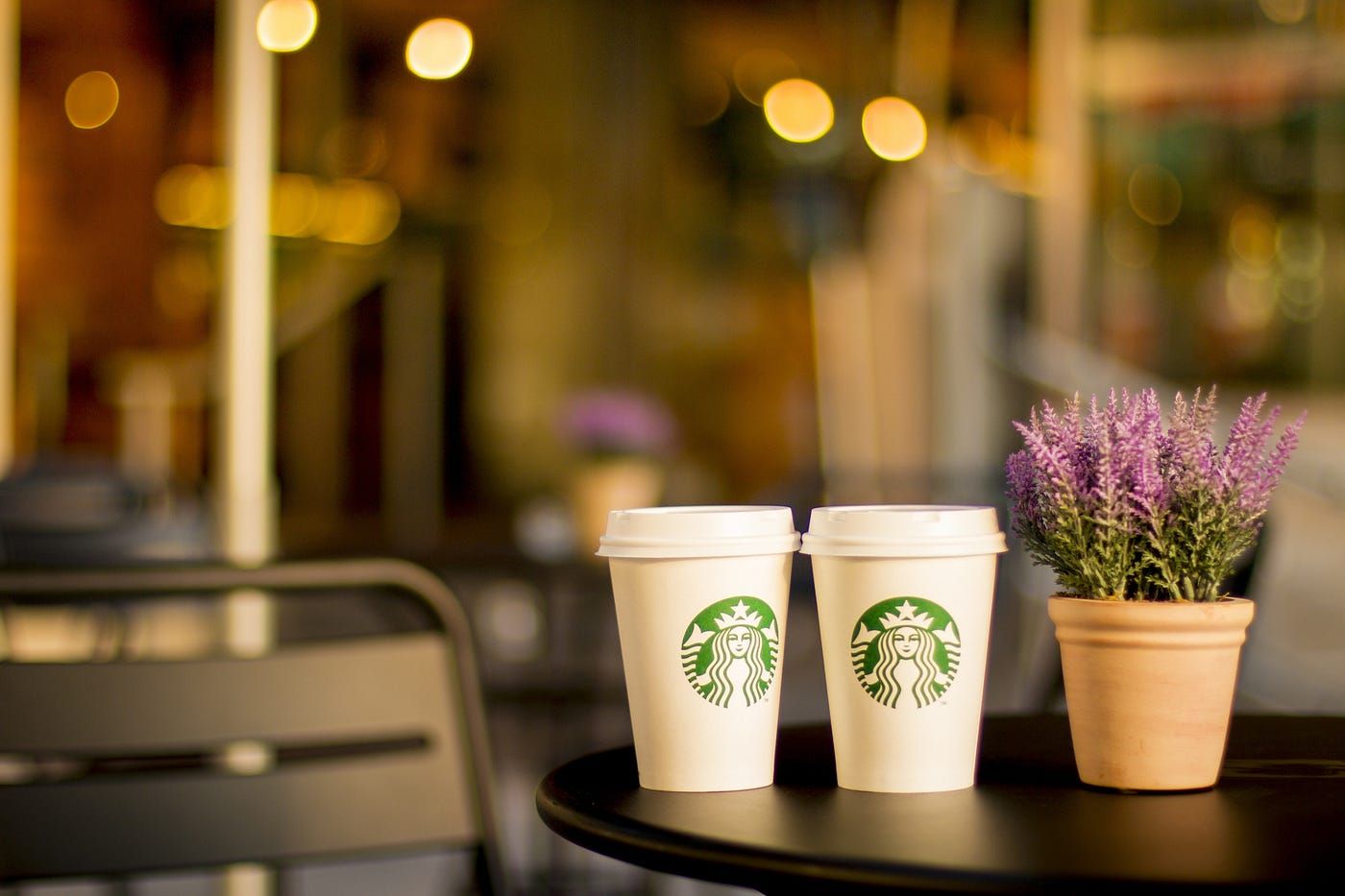
Starbucks Corporation, a global coffeehouse behemoth, is embarking on a significant strategic pivot, doubling down on the foundational principles of hospitality and human connection at its cafes. This ambitious initiative, dubbed “Green Apron Service,” represents a core component of CEO Brian Niccol’s overarching “Back to Starbucks” plan, designed to rekindle sales growth in an increasingly competitive and price-sensitive consumer landscape. As companies vie for attention with value offerings and novel beverages, Starbucks aims to distinguish itself by elevating the guest experience, moving beyond transactional efficiency to foster genuine engagement.
The genesis of this renewed focus stems from a critical assessment of evolving consumer behaviors and internal feedback from its baristas, or “partners.” With digital orders now accounting for more than 30% of total sales, the company recognized a growing need to balance the speed and convenience of digital platforms with the warmth and personal touch that traditionally defined the Starbucks experience. Chief Operating Officer Mike Grams articulated this vision, stating, “The strategy is to reconnect our partners with our customers.” He added, “When you walk through that door, you’re greeted with a smile. You are greeted again at handoff, a perfect cup of coffee … and you’re met with that connection.” This underscores a fundamental belief that human interaction remains paramount.

The “Green Apron Service” program, which recently commenced barista training, is more than a superficial refresh; it represents the largest investment the company has ever made in hospitality and its store employees. Chief Financial Officer Cathy Smith revealed that Starbucks intends to invest over $500 million in labor hours across company-owned cafes over the next year, beginning with the Green Apron Service rollout. This substantial commitment reflects a conviction that a well-supported and empowered workforce is essential to delivering a superior customer experience. The initiative incorporates a suite of practical changes aimed at enhancing the in-store ambiance and service delivery, including a new dress code featuring the iconic green aprons, upgraded interiors, and even a return to the personalized touch of writing names on cups, a move that necessitated the purchase of 200,000 Sharpies. Other adjustments involve refining operational policies, such as the discontinuation of the open-door restroom policy and a strategic reduction in certain menu items to streamline operations.
At the heart of the Green Apron Service’s operational framework lies technological innovation designed to complement, not replace, human interaction. The company is deploying “Smart Queue” (SmartQ) technology, an advanced order sequencing algorithm, to optimize staffing, scheduling, and order flow. This algorithm aims to ensure that “we’ve got the right partners in the right place at the right time throughout the entire day,” as Grams explained. The objective is to achieve consistent and high-quality service, irrespective of whether a customer orders in-store or digitally. This includes the implementation of a dedicated barista for drive-through orders and, in some cases, a “digital host out front who is navigating that experience.”

The commitment to efficiency is tangible, with a stated goal of delivering customized drinks in four minutes or less for both counter and drive-thru service. Early results from a 1,500-store pilot of Green Apron Service provided promising indicators of its potential impact. These pilot locations demonstrated improvements in transactions, sales, and customer service times. Specifically, Niccol noted, “Where SmartQ is being leveraged, we’ve seen a double-digit improvement in cafe orders handed off in under 4 minutes with 80% of in-cafe orders now meeting that target.” Drive-thru service times were consistently maintained under the four-minute goal, averaging 3 minutes and 20 seconds across more than 7,600 drive-thru coffeehouses during peak hours. Furthermore, the accuracy and timeliness of Mobile Order and Pay transactions also improved, addressing a prior challenge where the mobile channel experienced a “mid-teens percent order incompletion rate.”
The Green Apron Service is also intricately linked to bolstering the internal culture and operational consistency. The company’s internal metrics suggest positive impacts on its workforce. U.S. hourly staff turnover has notably declined to 49.1%, while shift completion reached a record high of 98.2%. Niccol highlighted that retail employee engagement scores have climbed, and coffeehouse leader engagement is now near historic highs. This suggests that the substantial investment in labor hours and the strategic adjustments are resonating positively with employees, fostering a more stable and engaged workforce.

Central to the service model are Niccol’s “Five Key Moments,” which are designed to define the customer experience through “craft and connection.” This structured approach ensures a consistent delivery of hospitality standards across all touchpoints. Additionally, the evolving staffing model includes plans to add a dedicated, full-time assistant manager to most U.S. company shops starting in the fall, with learnings to spread across the majority of company-run venues in 2026. This move aims to build a robust leadership pipeline, supporting Niccol’s mission of promoting over 90 percent of leaders from within the organization. A “growth scorecard tool” is also slated for Q1 2026, empowering coffeehouse leaders with insights to refine performance and incentivize improvements.
The commitment to human connection extends beyond service protocols into the physical spaces themselves. Starbucks plans to remodel 1,000 U.S. coffeehouses by the end of next year, representing an investment of approximately $150,000 per store with minimal downtime. These redesigns are intended to restore comfortable seating, enhance ambiance, and introduce design elements that convey warmth and texture, thereby reinforcing Starbucks’ identity as a “third place” – a community hub distinct from home or work. “We slowed new builds and major renovations to prioritize a new coffeehouse uplift program,” Niccol stated, emphasizing this strategic shift.

Furthermore, Starbucks is actively developing a “Coffeehouse of the Future” prototype, a 32-seat standalone model featuring a drive-thru, set to debut in fiscal 2026 with an impressive 30% lower build cost. A smaller, 10-seat version is under construction in New York City, slated to open in the coming months. Simultaneously, the company will “sunset” its 80-plus mobile order and pickup-only locations in FY26. Niccol explained that these stores, devoid of seating areas, had become “overly transactional” and “lacked the human connection that defines Starbucks.” This strategic consolidation underlines the company’s renewed emphasis on balanced convenience with human interaction, ensuring that even digital orders are fulfilled within a welcoming physical environment.
Complementing the operational and physical transformation is a significant reimagining of the Starbucks Rewards program, anticipated for 2026. With 34 million active members and a total program membership exceeding 65 million, the loyalty program is a crucial touchpoint. Niccol acknowledged that the program had, perhaps, become too much of a “one-size-fits-all” “discounting mechanism.” The objective is to evolve it into a system that genuinely “recognizes people for their loyalty and builds more engagement.” This strategic shift aims to deepen loyalty, boost brand engagement, and reduce an over-reliance on discount-driven transactions. CFO Cathy Smith noted that Starbucks has already reduced the percentage of discounted transactions by one-third, returning to “more normalized levels as we build back a healthier transaction base and focus on improving the overall value proposition for our customers.”

Beyond loyalty, Starbucks is preparing a “consistent drumbeat of innovation” for fiscal 2026. This includes introducing premium coffee experiences, beverages beyond traditional java, and artisanal food offerings designed to resonate across various dayparts. Function-forward offerings are also on the horizon. A notable example is the “protein cold foam,” set for release in late Q4, developed through the “Starting 5” approach in collaboration with baristas. This innovation, leveraging one of Starbucks’ most popular modifiers (cold foam grew 23% in Q3 year-over-year), allows customers to add 15 grams of protein to “virtually any cold beverage” with no added sugar. Early 2026 will see the launch of a reimagined artisanal baked case and a new 1971 dark roast coffee, available on the Clover Vertica brewer. Deeper into 2026, customers can anticipate more experiential beverages and “nutritious satisfying bites” for the afternoon. Pilot programs for coconut water-based tea and coffee beverages, gluten-free, and high-protein options are also underway, catering to evolving consumer preferences for health and customization.
Despite these ambitious plans and operational refinements, Starbucks faces continued scrutiny regarding its financial performance. The company reported its sixth consecutive quarter of declining same-store sales, with global comparable store sales falling 2% in Q3 2025 and U.S. comparable sales declining 2%, driven by a 4% slide in transactions. Global net revenue for Q3 2025 was $9.5 billion. However, Niccol expressed optimism, stating that he believes the company’s turnaround is “ahead of schedule,” a sentiment that saw Starbucks shares rise post-earnings. Since Niccol took the helm in September, the stock is up just under 3%, and has climbed nearly 25% on a one-year basis, although its year-to-date performance of approximately 2.7% trails the S&P 500’s 8.6% gains.

Wall Street analysts remain divided on the timeline for Niccol to significantly improve the chain’s performance. TD Cowen recently downgraded Starbucks’ rating to “hold” from “buy,” citing a belief that the turnaround might take longer than anticipated to yield results. Niccol acknowledged that the transition would require time and emphasized that the impact on earnings would be temporary. He has directed the company to focus on in-store metrics, such as average wait times for orders, rather than solely on earnings per share as a measure of success at this stage. He stressed a commitment to strategic investments over short-term cost reduction, stating he would be “ruthless” in cutting expenses not directly tied to the “Back to Starbucks” strategy and growth programs. “We have to be critical of where we’re spending if it’s not driving toward the Back to Starbucks strategy and growth programs,” he noted.
Niccol envisions a “very different Starbucks awaiting at the end of 2026,” moving beyond merely “getting Back to Starbucks” to “building a better Starbucks, where everyone can experience the best of our brand.” He highlighted that while financial results may not yet fully reflect the progress, “meaningful signs” are evident. These include the aforementioned improvements in employee engagement and customer satisfaction scores, with customer connection scores higher and complaints down both quarter-over-quarter and year-over-year. Customer value perceptions are nearing two-year highs, particularly among Gen Z and millennials, who constitute over half of Starbucks’ customer base, signaling “renewed brand love from younger customers.”




:max_bytes(150000):strip_icc():focal(999x0:1001x2)/onassis-tempelsman-3-2000-f94e7e9d9125433baf3214cea69fe67f.jpg)